Last updated on April 7th, 2025 at 08:00 pm
Wood-burning fireplaces burn hotter than gas fireplaces. With a gas fireplace you can sit closer. Not only that, a gas fireplace burns constantly, with no giant flames or dying coals. With gas you don’t need space to move the chair for the perfect warmth, because you’re already there. Here’s a reference for safe distances to gas fireplaces.
According to most experts, 30 inches from a wood-burning fire pits edge is the ideal distance for a seat. With a gas fireplace, you should be about 24 inches from the flame.
You can place gas wells under a roof, if the roof is at least six feet above the well. Gas fireplaces can be placed safely on wooden floors or pergolas. Gas fireplaces can be more intimate than wood-burning ones.
Wood fires are more like campfires. There really is nothing like a dancing flame, the smell of burning wood and the crackle of the fire.
But with a wood-burning brazier you need more space. Depending on the heat of the fire and the direction of the smoke, you can move the chairs.
Where Do I Put My Brazier?
The place where a fire pit is placed or built affects your safety, so the location must be chosen very carefully. Usually, local regulations will tell if a fire pit can be built and where to find it. Contact your city fire brigade for details and information before starting a project.
You need a large open space for a fire pit because you need to make sure that flames and sparks reach nothing and that the location you choose must be level.
Since braziers work particularly well alongside other social spaces, such as an outdoor kitchen or patio, consider the prevailing wind direction on your property and any views you want to emphasize.
Space Requirements
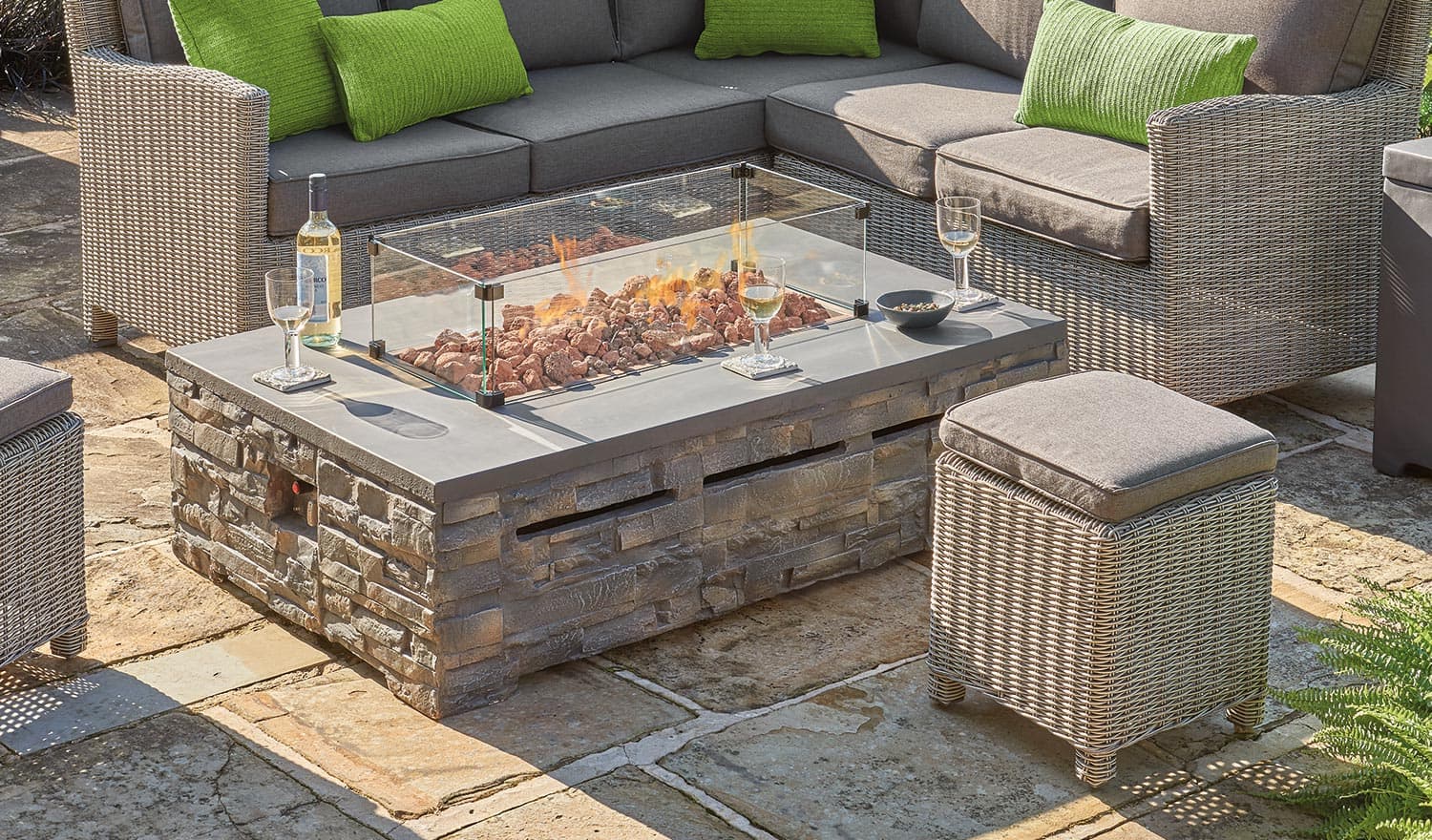
When considering how much space you will need for a fire pit and seating area, the first thing you need to do is determine the size of the pit.
Fire pits are usually meant to be in the center for enjoying them from all sides, so make sure there is plenty of room for chairs around them. Also, make sure there is room for people to walk around the pit safely.
Tip: A good rule of thumb is to leave at least 7 feet of space around all of the outer edges of a fire pit, leaving plenty of room for chairs or other furniture and room to walk comfortably.
If you’re still unsure of the size, a great tip for knowing how much space you need is to mark the fire pit and place chairs around it. This way you can get the right amount of seating for your needs.
Relevant Read : Best Gas Grill Under 00 in 2021 – Complete Grills Reviews
What Materials Should Be Used For Fire Pits?
Materials for a fire pit are very important. A fire pit should be built of materials that can withstand high temperatures.
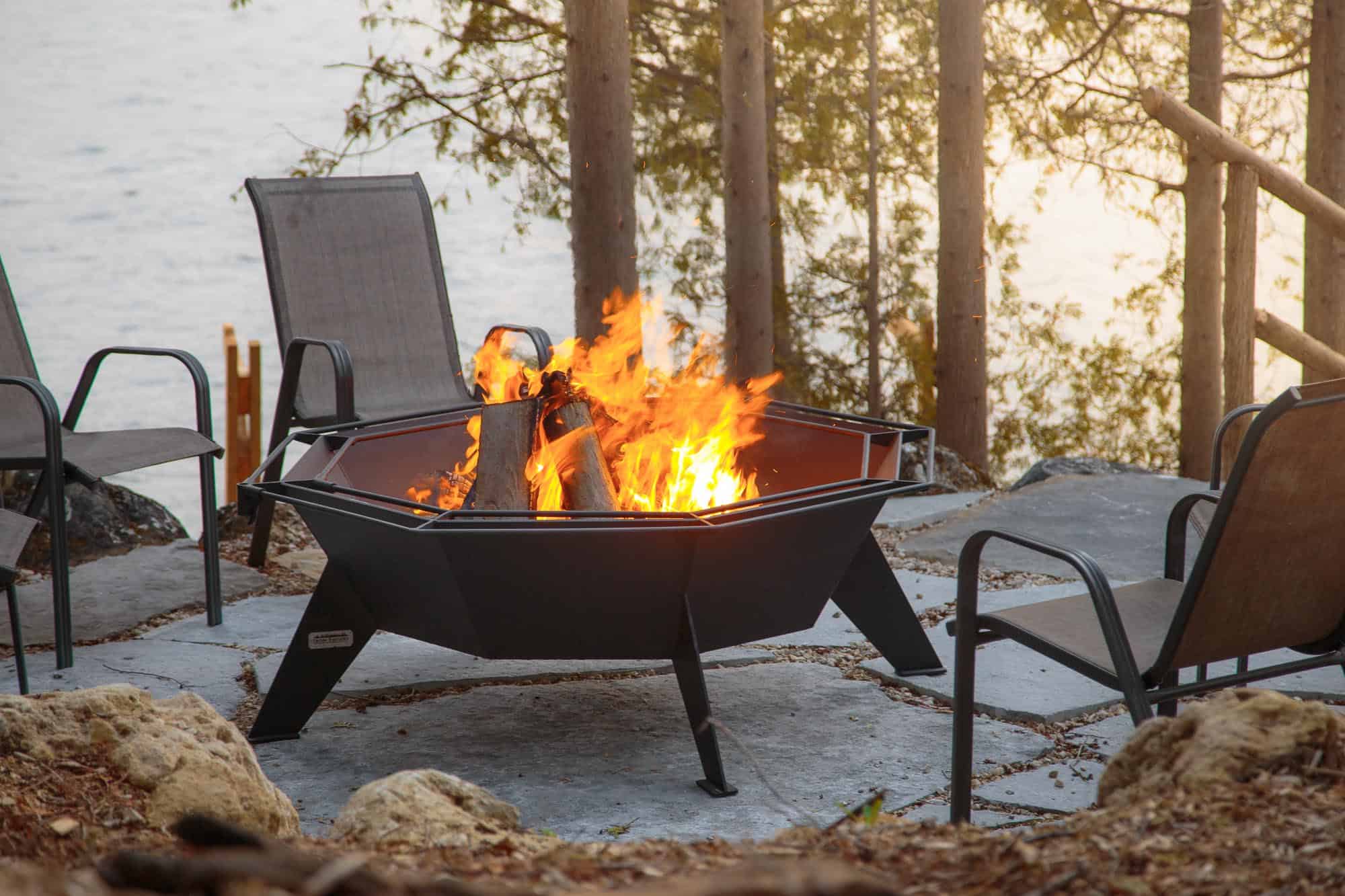
Some types of rocks have the potential to explode. Rocks to avoid when building fire pit pavers are: sandstone, limestone, pumice, and river rocks.
The internal wall must be made of refractory bricks and refractory mortar or grout as it will come in direct contact with the fire. The rest of the pit can be built with masonry, poured concrete, stone, brick or slab.
Can I Build a Fire Pit Myself?
We strongly advise you not to do this. Building a fire pit is no easy task. You need to know what kind of material you will use and know all the details to avoid accidents, burns or environmental fines. The price to carry out the project alone is not worth all the risks.
How Much Space Should You Leave Around a Fire Pit?
A wood-fired brazier needs more space. Leave 14 to 18 feet from the center of the fire pit to the edge of the patio. For a gas fireplace, leave 7 feet.
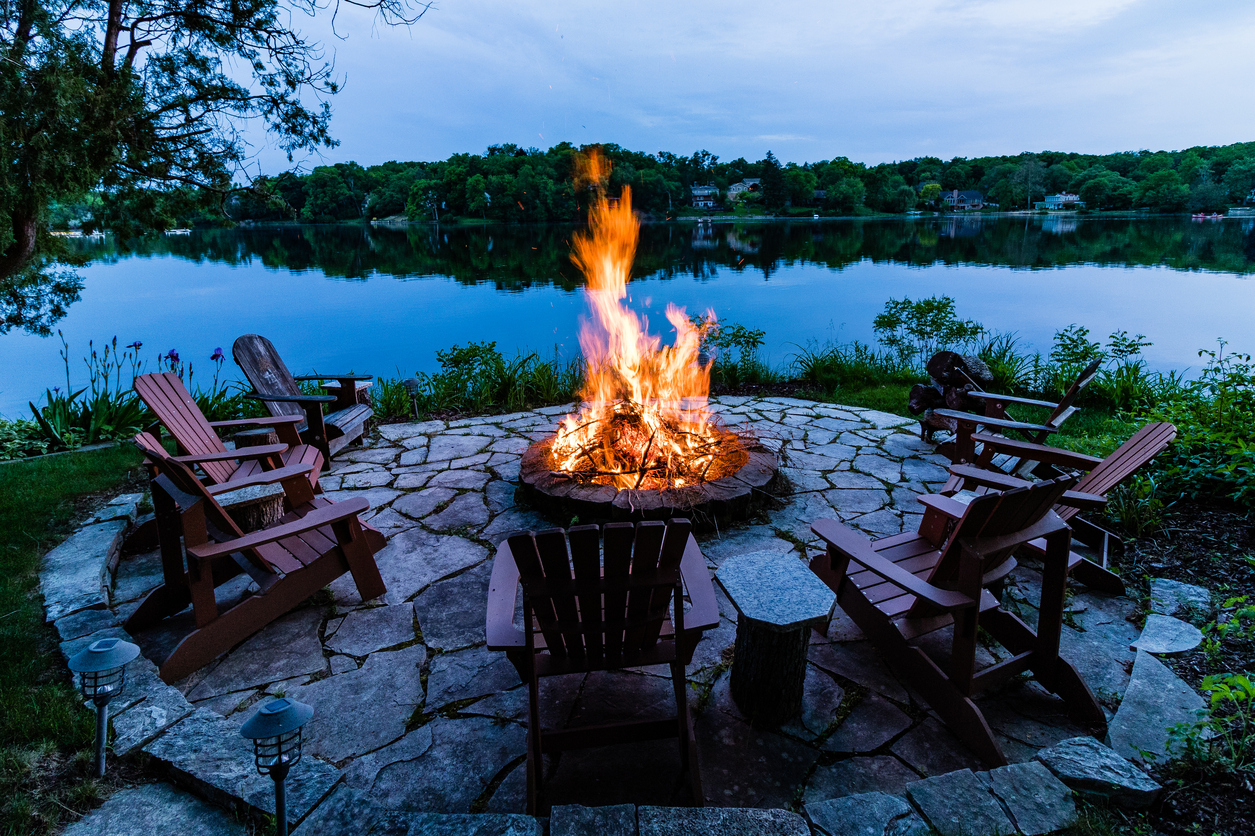
For a wood-burning fire pit, you need space to move chairs and not to walk too close to the fire. One way to plan for this is to measure from the center of the fire pit. Measured this way, most patio experts recommend a diameter of 14 feet to 18 feet in diameter. Remember, it’s always best to have too much space, not too little.
Note: Most deep seat type chairs are 36 inches deep. For safety, allow 2 feet to go around the seats. If you like to put your feet on the edge of the fire pit, that distance is about 30 centimeters. If you run two feet behind the seat, the total distance from the brazier edge to the patio edge is 7.5 feet.
For a gas fireplace, the math is simpler. You should not sit shorter than 2 feet. Most deep seat type chairs are 36 inches deep. Then add 2 feet behind the seat for a safe walking space. That’s 7 feet in total. A patio with a gas fireplace is much smaller.
How Many Chairs Can You Have Around a Fire Pit?
For a wood-burning brazier, you can have two to six large seats. For a gas stove, two to four chairs are perfect.
Are Built-in Benches a Good Idea Around Fire Pits?
Built-in benches are a great idea for fire pits. Benches expand the seating exponentially and add an aesthetic touch to your spunk.
By adding a sofa, you can add eye-level design elements that accentuate your pit style. If you’re a minimalist, use the same materials, such as concrete, for the fire pit, patio, and bench. If your pit style is rustic, consider mixing stone and wood.
For a traditional look, you can add cast aluminum benches. Soften the look of the sofa with some cushions and garden flowers.
Pro Tip: Placing the bench around a fire pit can be tricky. Too close and you’re too hot and too far away and what’s the point? The rule of thumb distance from the edge of the fire pit is no closer than three feet but no further than four feet.
The built-in burners are stylish but also practical. By sinking the fireplace, you prevent wind from blowing around the fire. Recessed braziers are also good for cold climates – one with high walls will trap heat.
What kind of Chairs Are Good Around a Fire Pit?
Whatever is the most comfortable chair for you. A brazier is for relaxing, so your seats should be comfortable for hours — and hours — and hours.
Pick your favorite: Adirondack, Deep Chairs, Outdoor Sofas, Outdoor Loungers, Modular Chairs, Lounge Chairs, Resin Wicker, Rocking Chairs, Hanging Egg Chairs, Gliders, or Zero Gravity Chairs. If you like rustic, pull up some stumps.

Whatever your seating preference, make it comfortable. So think about fire safety. Fire pits should always have fire safety as a concern.
Steel and aluminum chairs without cushions are the most fire-resistant. And maybe they are the most comfortable for you. But many people prefer padded seats.
Soft, upholstered seats are not flame retardant. Some fabrics, such as Sunbrella, are flame retardant. You can, however, treat your comfortable upholstered chairs with a flame retardant.
To be fire-resistant, a fabric must withstand heat. Flame Retardant (FR) fabric is difficult to ignite, but if it burns this slowly, the fire will die out on its own. Flame retardant means that the fabric has been treated with a chemical to give them flame retardant properties.
Tips For Designing a Fire Pit
Fire pits are becoming more and more popular and it’s no wonder. There is just something about gathering around a fire that is inherently human. A fire pit quickly becomes everyone’s favorite meeting place.
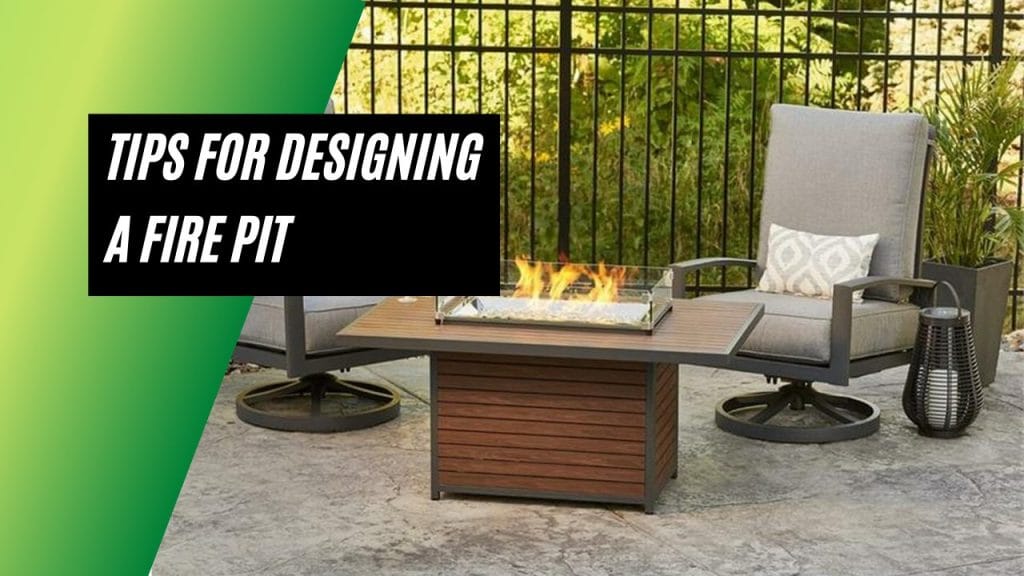
It is the ideal place to relax, unwind, tell stories and get to know each other on a deeper level. If you are considering adding a fire pit to your yard, there are many options to consider before starting.
Decision 1: Mobile or Integrated
Many people opt for a mobile fire pit that can be moved to different places. Movable firepots are certainly less expensive than a built-in bowl, come in a wide variety of designs, and have the added benefit of portability. The main drawback, however, is that a movable bowl usually only lasts a season or two before the materials begin to deteriorate.
Decision 2: In the Ground or Above The Ground
A buried fire pit can be cost effective, but above ground pits are more common. One trend is to create a “submerged living room” design for an above ground fire pit.
This offers the added benefit of built-in seats. In addition, the boundary wall can act as a windbreak or a heat reflector, creating a warm and welcoming space.
Decision 3: Gas, Wood or Hybrid
A gas fireplace has a number of benefits. It is easy to start, there is no clutter, there is no smoke and can be placed closer to the house. For purists, however, burning wood is one of the main reasons for having a fire pit as well.
For the best of both worlds, consider a wood-burning fire pit with a gas starter. A popular trend is to install a gas starter with a switch that can be controlled locally, from home, or with a mobile app.
Decision 4: Positioning
An above ground well will become the center of your outdoor life. Take care of it and place it where it balances with other important design elements. A gas fireplace can be placed just about anywhere, but a wood pit should be at least 10 feet away from any structure.
Before installing a permanent fire pit, check for wind patterns that may be causing smoke problems. Also remember to leave plenty of room to sit around the pit.
Decision 5: Materials And Shape
Above ground fireplaces can be made with different materials. The most popular options are brick, stone and concrete blocks, such as Belgard retaining wall products. While the design possibilities are endless, most bowls are round or square. One reason has to do with the shape of standard bowl liners.
Fireplace linings are highly recommended and may be required by the local municipality. In addition to adding a finished look, a steel cladding ensures that excessive amounts of heat are not absorbed by the surrounding stone.
By reflecting heat upwards and outwards, it contributes to the longevity of the stone and creates a safer environment. It also increases the feeling of warmth for those around the fire.
Decision 6: Seating
The recessed seat is one of the main trends in outdoor living right now and is an excellent addition to the fire pit design. Some people like to place the seat walls six feet from the fire pit, leaving room for walking.
Others prefer a three-foot distance, which allows you to rest your feet on the edge of the pit.
If you use seat walls, consider leaving one or two sides open. This offers the possibility of placing furniture, which softens the look and makes the design more interesting. Use a variety of outdoor throws and throw pillows to add comfort and color to the seating walls.
Fuel For The Fire
Always burn dry, seasoned wood that has been cut at least six months previously. Make sure the logs are no larger than three quarters of the diameter of the well to avoid flying sparks.
/cdn.vox-cdn.com/uploads/chorus_asset/file/19496176/firepit_0907_x_0.jpg)
For gas wells, make sure all vents are clear to avoid smoky flare-ups. And it only uses the fuel the well was built for. For traditional wood-fired kernels, this means using dry, well-seasoned sticks.
Also, do not charge so much that there is a risk of some falling. Once the well is lit, keep the following handy in case your merry bonfire suddenly starts to burn a little too brightly.
Fire Extinguisher
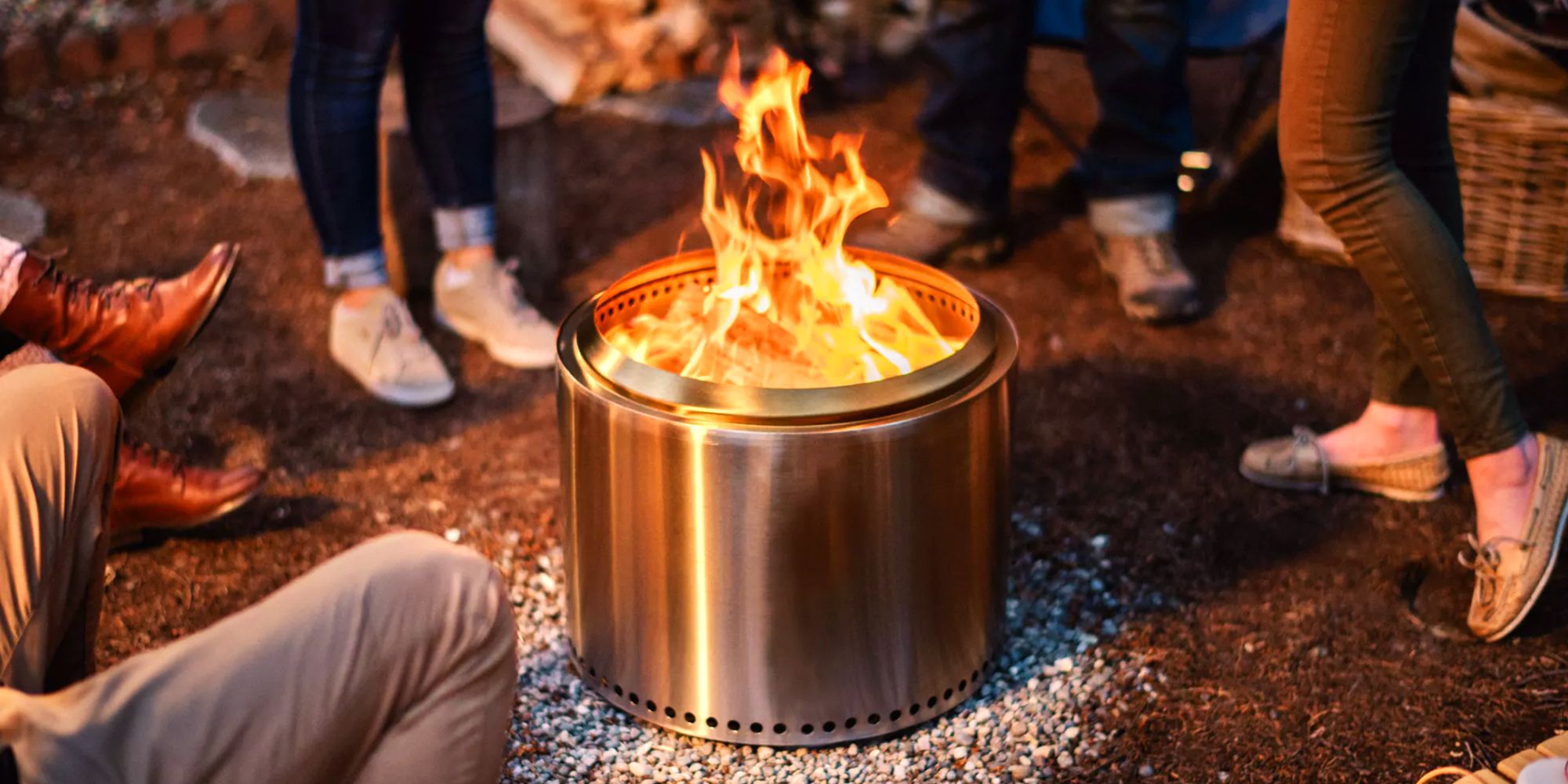
It must be a class B and C fire extinguisher or a multi-purpose chemical powder fire extinguisher, such as the one in the kitchen. Prepare to follow the PASS procedure:
- 1) Pull the pin;
- 2) Aim at the base of the fire;
- 3) Slowly press the trigger;
- 4) Wipe the mouthpiece back and forth.
